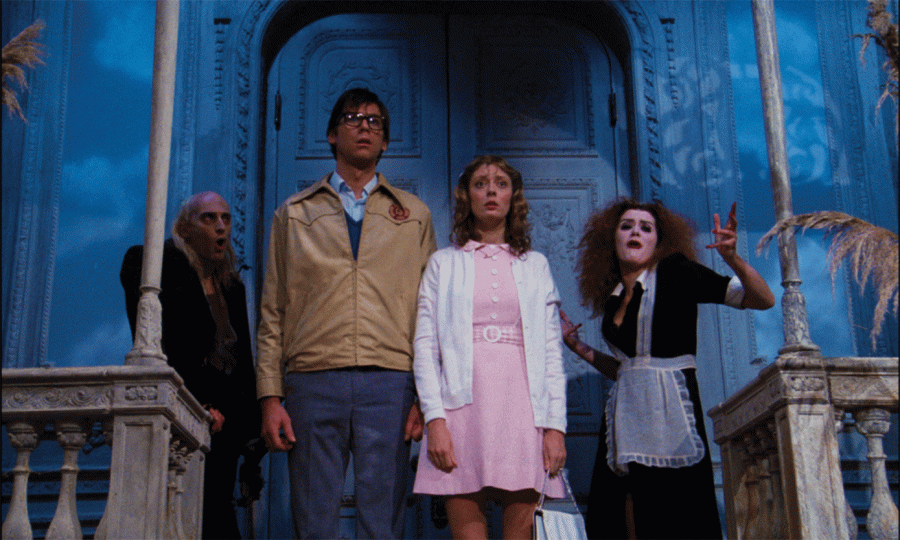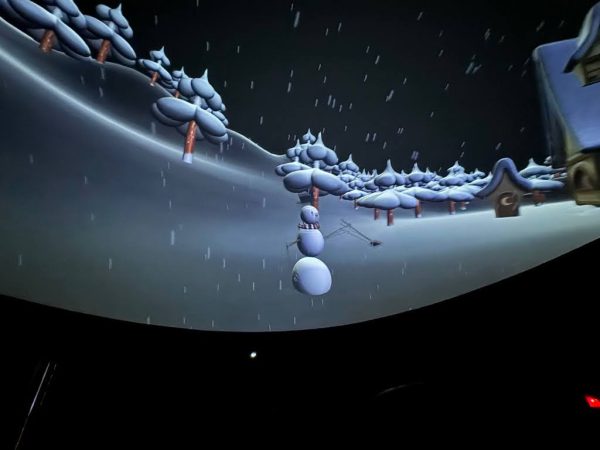The Rocky Horror Experience Comes to Colgate
Strangely enough, I didn’t know what The Rocky Horror Picture Show was until it was referenced in the TV show “Glee” and in the book-turned-movie The Perks of Being a Wallflower. At the time, I wasn’t intrigued enough to look into it further. Then just two years ago, I read Roger Ebert’s Book of Film, which included an essay about the 1975 film’s cultural impact and cult following. According to the author, screenings – shown almost every year near Halloween – are complete with audiences singing along, talking back to the characters and more. I was deeply confused – what kind of a movie was this? I read the synopsis of the movie, and grew even more confused with its bizarreness. Finally, I decided that this year I would catch it at the midnight screening, and what an experience it was.
The film is narrated by a criminologist (Charles Gray), teased by audiences for his lack of a neck. He tells the tale of Brad Majors (Barry Bostwick) and Janet Weiss (Susan Sarandon), a couple who becomes engaged at the start of the film. One cold and rainy night, they find themselves at a dead end with a flat tire. Remembering that they had passed by a castle, Brad and Janet decide to approach it in hopes of finding a telephone. Let inside by a handyman named Riff Raff (Richard O’Brien), they encounter a group of strangely dressed and outlandish people holding an Annual Transylvanian Convention. Soon enough the head of the house, Dr. Frank N. Furter (Tim Curry), a mad scientist and transvestite, makes an appearance, and Brad and Janet are swept into his disorienting world.
The Rocky Horror Picture Show functions equally as comedy, horror and musical but is best categorized as parody, if anything. As a result, the cast’s performances are purposefully satirical, which adds to the self-awareness of the film. I only recognized a couple actors, but it was shocking and amusing to see veteran actors Tim Curry and Susan Sarandon as their younger, pre-fame selves. In terms of plot, the progression is unclear and peculiar, and not quite satisfying in its end: I had to read over the film’s synopsis to clarify what had happened (although I admit my hearing isn’t the best). The music was also unmemorable, and every song felt the same, but perhaps it’s an acquired taste.
Nonetheless, regardless of how I felt about the film itself, I still enjoyed the experience. If it hadn’t been for the fans and fanatics in the room, though, I may not have. The snarky comments, the spraying of water (to signify rain) and the flying of toilet paper all contributed to my understanding of the movie’s hype. And yes, people actually brought bottles of water to spray each other with during a scene where it rains. My understanding of the film is that it definitely isn’t for everyone. One of my first-year friends commented that it was “the worst movie [she] had ever seen,” and did not appreciate the unconventional participation of the audience. Yet, it does raise interesting questions about the relationship between the viewer and the medium. Beyond being a tribute to B-movies, I suspect that The Rocky Horror Picture Show is much deeper than it seems, questioning that relationship, as well as norms of sexuality, manipulation and more – no matter how silly it may appear on the surface.
Contact Gloria Han at [email protected].






